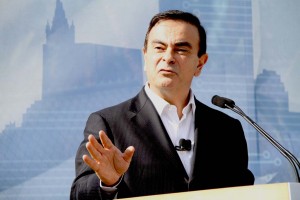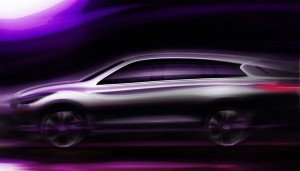Declaring it’s time for the maker to go on the offensive, “instead of restructuring,” Nissan CEO Carlos Ghosn has revealed his new Power 88 plan, which could put it within striking distance of the hobbled Toyota Motor Co.
The new six-year plan is the latest in a series of long-term targets laid out by Ghosn since assuming control of the then-struggling Nissan just before the turn of the Millennium. But short of the original turnaround strategy, Power 88 is arguably the most ambitious laid out by the Brazilian-born executive.
It calls for a huge increase in Nissan’s market share, to 8% within six years, while the maker also targets an 8% profit margin. To help support its ambitious aims, Ghosn promises Nissan will significantly expand its presence in emerging markets, like China, while rolling out at least one new product, on average, every six weeks.
“This is the first time that Nissan is starting a plan on the offensive instead of reconstructing something, or defending something,” Ghosn told reporters at the maker’s new headquarters in Yokohama.
When the executive came to Japan in 1999 – backed by France’s Renault, which had committed $6 billion in a rescue attempt – Nissan was considered the basic case of the global auto industry. But last year it became one of the most profitable, slipping past Honda to become Japan’s third-largest automaker.
In 2010, Nissan’s global market share surged to 5.8%, while its operating margins reached 6.1%. More recently, the maker revealed a forecast for $3.4 billion profits for the fiscal year ending next March 31. While that would be a 15.4% year-over-year decline, it would also be the smallest drop forecast by one of the major makers in Japan, the industry hammered by the March 11 earthquake and tsunami that has since led to sharp shortfalls in production due to parts shortages.
Ghosn last week forecast a 9.9% increase in global sales volumes despite the revenue decline, which would yield a worldwide record if sales achieve his target of 4.6 million. By the conclusion of Power 88, Nissan sales would reach somewhere around 7 million – an 8% share of the worldwide automotive market of 90 million vehicles Ghosn anticipates.
That’s well short of rival Toyota, which is hoping to generate volumes close to 8 million this year – and 10 million by 2015. But Toyota faces a variety of challenges, according to industry analysts, who note it has been falling short of expectations for several years.
Nissan has been targeting growth in markets all over the world, and its 2010 performance reflects strong demand in Europe as well as China. The maker is just one of many hoping to continuing gaining momentum in the world’s largest and fastest-growing market – where its target is a 10% share — but Nissan is also targeting other emerging nations, notably Brazil, where the Power 88 plan calls for adding a new assembly line capable of rolling out 200,000 vehicles annually.
Then there’s Russia, where Nissan is in talks to acquire a majority stake in leading domestic automaker AvtoVAZ. Adding that company’s sales would immediately position Nissan as the world’s third-largest auto manufacturer, behind Toyota and General Motors – but ahead of Volkswagen AG.
But that ranking is fluid. As a result of the ongoing production problems, Toyota is expected to slip to number two behind long-time industry leader General Motors, at least for this year. VW, meanwhile, has set a goal of becoming the world’s largest automaker before the end of this decade.
With high-line brands ranging from Audi to Bugatti, VW is a major player in the luxury segment, a market where Nissan has long struggled. But it is looking to boost the role of its Infiniti division, which it believes can also achieve a 10% global stake. Infiniti will be one of the beneficiaries of Nissan’s aggressive product program, with at least three new models on the way, including the new JX crossover and a luxury batter car to complement Nissan’s mainstream Leaf model.
Ghosn is arguably one of the industry’s most vociferous proponents of battery-electric vehicles, and together with alliance partner Renault the partners shortly expect to have capacity in place to produce at least 550,000 BEVs annually.
But as a high-ranking executive at Nissan acknowledged – asking not to be identified by name – “that is perhaps the biggest risk facing both Nissan and Ghosn.” Many observers believe that the industry will have to push aggressively into the field of “electrification” in order to meet tough new emissions and mileage standards. But so far, consumers have yet to show signs of being charged up about the new technology other than among early adopters.
If the Leaf and subsequent battery cars don’t turn on the market Nissan could be faced with a costly and embarrassing failure, one linked directly to Ghosn. On the other hand, should they click, Nissan could be positioned to be a leader in battery propulsion, something that could give a big push to the Power 88 plan.


